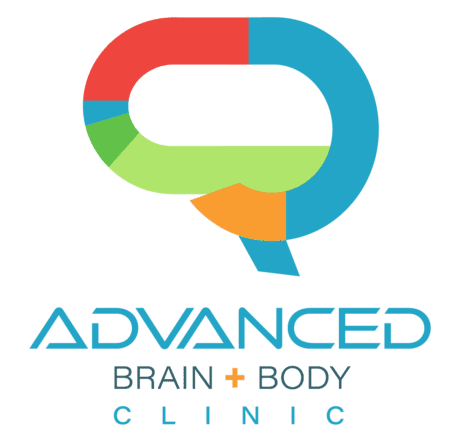The recent death of Mathew Perry speaks to the tragedy of depression and addiction. His passing is deeply saddening, especially given his openness about his struggles and attempts to get help. This loss has special meaning for loved-ones and the mental health professionals involved in ketamine treatment of patients suffering from combined depression and addiction.
Ultimately, Mathew Perry’s story leaves many of us with frustration and disturbing questions:
- Is there hope for people burdened with both depression and addiction?
- Is ketamine just too dangerous?
- What do we need to do better or differently?
Without knowing the specifics of Mr. Perry’s situation, the published reports provide important context. To summarize:
- Mr. Perry was being treated for depression using ketamine, an anesthetic agent that has been shown to grow neurons and improve mood within hours of administration at a low dose. There is robust scientific literature supporting this use, though it is an off-label application of a medication that is FDA-approved only for sedation.
- After his death, Mr. Perry was found to have ketamine in his body at a level commonly found in people receiving ketamine for anesthesia. This level is much higher than the blood level used to treat depression.
- Since ketamine has a short half-life (meaning the sedating effects wear off within a few hours), Mr. Perry’s high blood level could not have been the result of the most recent ketamine treatment he had around 1.5 weeks before his death.
- Even though Matthew Perry’s blood showed ketamine at a typical anesthesia level, this was not high enough to cause death on its own. As an anesthetic agent, ketamine makes people unable to take care of their basic physical needs, leaving them vulnerable to others or to accidents unless they are closely monitored.
- Mr. Perry also had a history of opioid addiction. His autopsy revealed the presence of buprenorphine, a medication used to help manage cravings. Buprenorphine likely enhanced the sedating effect of ketamine.
Ketamine as a prescribed medical treatment has much to offer depressed people in our community. It can save lives. Here what we must do to use it safely:
- Know that ketamine increases neuronal growth factors, enhancing the brain’s response to neurotransmitters. Although side effects of ketamine may include a temporary euphoria, or elevation in mood, the true benefit is the immediate and enduring decrease in depression, anxiety and suicidal thoughts, long after the side effects subside. For many mental health patients who haven’t had their symptoms respond to other antidepressants, ketamine can give them back their lives.
- Keep treatment in the clinic and follow a monitoring protocol that was developed for the branded drug, esketamine. Since ketamine is an anesthetic agent that diminishes an individual’s capacity to manage their basic needs, ketamine should only be used in a structured, controlled, and supportive environment. Following the Federal Drug Administration’s Risk Evaluation and Mitigation Strategy (REMS) protocol for esketamine (a branded derivative of ketamine known as Spravato) provides a universal standard of protection for patients and clinicians alike.
- Be aware of the high comorbidity between depression and addiction. Comorbidity means both conditions can coexist for a patient. A history of addiction can be a source of shame and embarrassment and may not be shared with treating clinicians, who should strive to gather sufficient information when evaluating potential patients, as well as their support networks, prior to administering any medications that could be abused, such as ketamine.
- Watch closely for addictive behavior to resurface. Patients with a history of chemical dependency may have symptoms reactivated by ANY potentially addictive drug, including ketamine. If this occurs, treatment doses and frequency may need to be decreased, or stopped altogether.
- Use standard methods to monitor for chemical dependency. While clinicians have limited ability to observe what occurs outside of the office, they can monitor for behavioral signs of drug use when patients are present and perform urine drug screens and blood tests that show the effects of drug and alcohol use on the body.
Getting back to our questions:
Is there hope for people burdened with both depression and addiction?
Absolutely. And ketamine can play a vital role in helping these individuals with treatment-resistant depression get their lives back.
Is ketamine just too dangerous? Ketamine can indeed be dangerous outside a clinical facility without experienced mental health clinicians controlling its administration and monitoring its effects. And given the complexity that addiction brings, we must be diligent in using this powerful drug with caution, following proven protocols.
What do we need to do better or differently? Taking steps such as those listed above can help prevent a potentially life saving treatment from becoming a life-taking treatment.

Stephen Manlove, MD graduated from the University of Minnesota Medical School and completed residencies in Psychiatry and Internal Medicine through the University of Virginia Medical School. He holds multiple board certifications in psychiatry/neurology, internal medicine and forensic psychiatry. This deep understanding of medicine gives him a unique ability to practice truly holistic psychiatry—fusing lifestyle changes and brain health best practices with genetic testing and a detailed laboratory workup to develop a personalized plan for each patient. As an early adopter of transcranial magnetic stimulation (TMS) and ketamine/Spravato, he and the Advanced Brain + Body team have helped thousands of patients suffering from treatment resistant depression, anxiety and PTSD.

